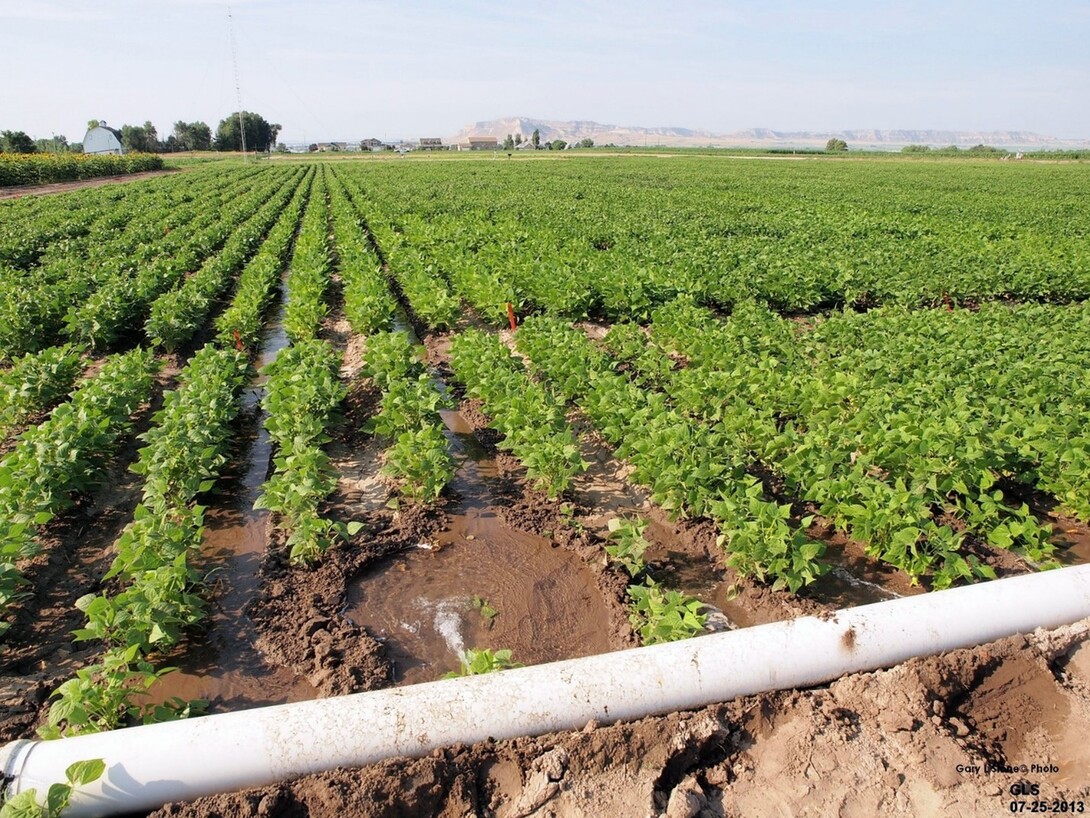
Lincoln, Neb. —Part 5 of a series about basic water law in the United States, predominately in the western part of the country, and how it affects this finite resource. Water law can be traced back to Roman times and also has roots in English common law. Across the United States, it varies from state to state, and from East to West. When conflicts arise, courts usually determine the outcome, unless there are state or federal laws or previous case studies to resolve the issue. Exceptions to the law can arise from differences in each state’s water laws.
Part 1: Basic concepts and legal terms, including riparian doctrine and prior appropriation.
Part 2: Other types of water rights and legal doctrines and concepts.
Part 3: Terms and definitions used in administering surface-water rights.
Part 4: Groundwater terms and definitions
Part 5: Groundwater - wells
Nebraska has an estimated 2.15 billion acre-feet of groundwater in aquifers underlying the state, according to the Groundwater Atlas of Nebraska (1998 edition), published by the Nebraska Conservation and Survey Division (CSD) and the Groundwater Foundation.
It might be hard to visualize such a huge quantity of water. But if somehow all that water were to cover Nebraska’s 49.5 million acres of surface area, it would be about 43 feet deep.
“Though some states may have greater precipitation, more water in lakes or greater streamflow, few can challenge Nebraska with respect to the amount and general availability of water stored and moving underground in porous rocks,” the Groundwater Atlas says. “In terms of total volume of good-quality groundwater available for use, Nebraska could be called The Groundwater State.”
The largest of these aquifers is the High Plains Aquifer, which includes the Ogallala Aquifer. About half of Nebraska’s groundwater is underneath the Sand Hills of Nebraska.
Wells, ranging from a few feet to thousands of feet deep, are the main means of transporting groundwater to the surface. Irrigation is the largest use of groundwater in Nebraska by far, according to the 2013 edition of CSD’s Groundwater Atlas. About 94 percent of all groundwater withdrawals are for irrigation water; public water supply is a distant second at about 3 percent.
Regulating the use of groundwater wells and solving conflicts between well users can be complicated and difficult. Here are some of the concepts and legal doctrines that come into play in the laws and regulations regulating wells in Nebraska:
Well spacing: In Nebraska, irrigation wells must be spaced at least 600 feet from neighboring registered irrigation wells, and at least 1,000 feet from neighboring registered industrial and municipal wells. There is no spacing protection for domestic or stock wells.
Well interference is where the pumping of one well interferes with the groundwater withdrawals from the other well. If the two wells are used for the same purpose, the wells share the available ground water or correlative rights. If the wells are used for different purposes, the lower-preference user may have to pay for the restoring the ground water supply of the higher preference user. The groundwater preferences in Nebraska are (in order of preference): domestic (including human needs related to health, fire control and sanitation, and also “domestic livestock as related to normal farm and ranch operations”), agricultural (including aquaculture), and manufacturing or industrial.
Reasonable pumping depths is a statute in some states to deal with well interference conflicts; in which the senior may be required to deepen his / her well to a “reasonable depth” in order to be protected from the deeper junior well. If the senior doesn’t have the well drilled to the “reasonable depth”, the junior well can pump “out of priority” regardless of priority.
A dry-year plan is a management plan that has been developed by a governmental agency (or agencies) to be implemented in the event of a drought or dry year and scarce water supplies, so that all water users share correlatively in the reduction of water availability and use.
Quick response wells (In Nebraska) are irrigation wells that lie within 2.5 miles of a hydraulically connected stream or river that could be called on to reduce pumping (by 50 percent) under a dry-year plan.
Upland wells (In Nebraska) are the remaining irrigation wells (under a dry-year plan) that lie outside of the 2.5-mile boundary from the stream or river; that could be called on to reduce pumping (15 percent), but not as much as the quick-response wells.
Sporhase vs. Nebraska Ex Rel. Douglas, a case from the U.S. Supreme Court that originated in Nebraska affects Nebraska and all other states. Sporhase, who owned adjoining land in both Nebraska and Colorado, was denied a well permit in Colorado. He drilled a well in Nebraska and pumped water across the border to Colorado to irrigate his crops. Nebraska had a statute that required a permit to export ground water into another state. In order to get the permit, there had to be “reciprocity” between the states. Colorado did not have reciprocity and did not allow its groundwater to be exported to another state. The issue was whether groundwater was subject to the interstate commerce clause of the U.S. constitution, which authorizes Congress to regulate the movement of goods across state lines (“interstate commerce”). The court ruled that ground water was an article of commerce, regardless of whether groundwater could be marketed in Nebraska or not. (The right to use groundwater now is marketed, following the passage of Legislative Bill 962 in 2004, which put an end to expansion of groundwater use in many parts of the state.)
Congress can regulate interstate commerce, but, in addition, states can’t regulate commerce unless the regulatory effects on commerce are only incidental. Now states must allow their groundwater be exported, subject to reasonable regulations (that aren’t designed to prevent exports).
So if Denver, on the Front Range of Colorado, or California, wants groundwater from the Ogallala Aquifer under the Sandhills of Nebraska, could they get it?
State law (Section 46-613.01) provides for transfers to other states, but also spells out the process that must be followed: Those seeking a transfer must apply to the Nebraska Department of Natural Resources (NDNR) for a permit. The director of NDNR will take into consideration the nature of the proposed use; the availability of alternative sources of water to the applicant; any negative effect of the proposed withdrawal on groundwater or surface water supplies to meet Nebraska demands; adverse environmental effects; the cumulative effect of relative to above when considered in conjunction with all other transfers; and any other factors the director deems relevant to “protect the health, safety and welfare of the state and its citizens.”
Any permit issued for transfer also must comply with the rules and regulations of the NRD from which the water is to be withdrawn.
And to repeat the question that concluded previous parts of this series: What is water worth?
NEXT: Sharing water.







